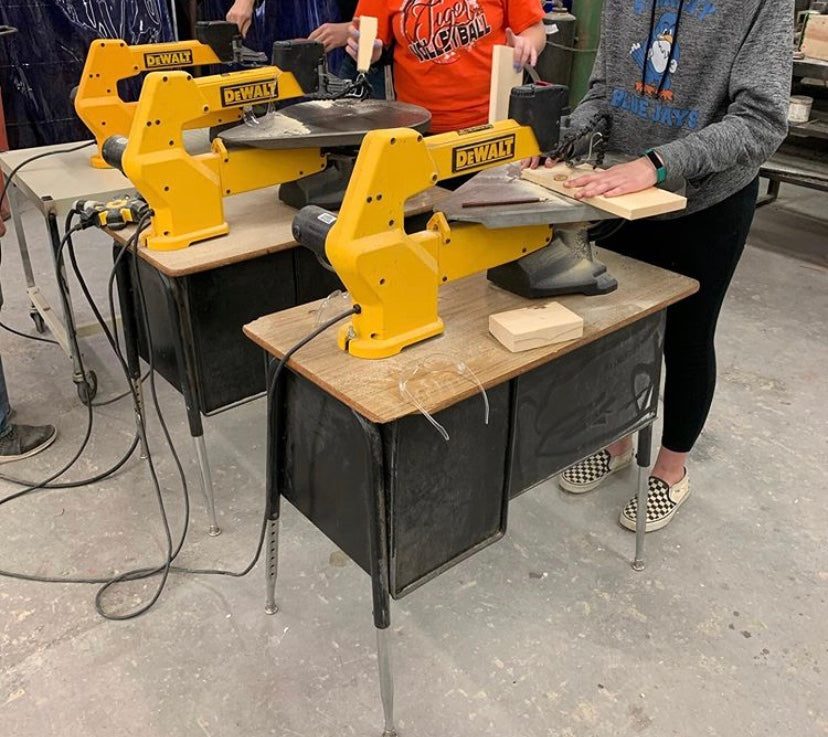Basic Ag Mechanics Skills that Middle Schoolers Should Know

As teachers we seem to be in a hurry to get to the fun stuff with our students. Often, the fun stuff requires a lot of prep work, costs money, and devotes a lot of our attention for a single lesson. Remember we aren't producing master welders or foresters. We are producing educated students who have an understanding of the basic components of agriculture related subjects.
Get Hands On
To prepare middle school students for the rigors of high school, they should get their hands on basic tools and have a lot of trial and error. Bent nails and split boards can provide teachable moments that you can not generate from a PowerPoint or video. Devote time to hands-on skills that your students should know, but likely won't get outside your classroom. Here is a list of simple Ag Mechanics skills that you can cover.
More Than Just Hammers
Properly hammering a nail -- several hammers, scrap lumber, and a box of nails will take you a long way. You can cover:
- Nail size and how that changes with the size of the wood (lumber versus trim).
- Why did my wood split?!
- How to control bouncing wood when nailing
- How to properly pry a bent nail from wood
Drills and Drilling
Drilling and fasteners -- rechargeable drills, wood screws, and scrap wood will frustrate them for hours. However, it's better to learn under your supervision so you can teach them the right ways then have a lifetime of struggle as an adult.
- Stripping screw heads
- When to pre-drill holes
- How drill all the way through lumber without tearing wood on the bottom
- When is a screw too long or too short
- Screws and sheetrock
The Art of Finished Wood
Finishing wood -- have students construct a scrap wood farm tractor and then finish it off. Finished wood really sets some woodworking projects apart from the rest. It takes time and practice and middle school is the place to learn these finishing techniques.
- Sanding - grits, when to sand and when to saw
- Painting - what causes runs, drips, and errors
- Staining - stains don't get on just the wood, patience, and how many coats?
- Filling holes - wood putty, wood filler, and dowels/pegs
Basic Wiring Skills
Electrical wiring -- it's harder for middle schoolers than you think. Fine motor control is still a struggle even for some middle school students. Teach them the fundamentals so that as they progress to high school these basic skills will help them advance quickly in the shop.
- Stripping wire - proper removal, what happens when you remove too much, and tool use
- Bending wire - which direction?, tool use, and practice
- Securing terminals
Small Engines for Beginners
Starting a small engine -- they don't always start on the first 5 tries. What do you do then? Troubleshooting is another name for problem solving. Whatever you want to call it your students need to learn persistence to locate the problem.
- Proper technique
- Regular maintenance - strings/blades/chains, fuel level, oil level, and air pressure
- It won't start? Usually because of two main problems: fuel or fire (ignition). Go through each system from start to finish to discover the problem
- Safety - moving parts, safety equipment, proper clothing, and chemical/fuel dangers
I chose 5 basic Ag Mechanics activities that your students not only should see but also practice, practice, practice. The sooner they learn how to use these skills correctly, then the less likely they will develop unsafe techniques the pick up on their own. I am sure each of you know more.
If you are looking for more ideas to use in you Ag Mechanics class take a look at Business/Fundraiser Ideas for Ag Class for five great ideas that your students can create and help fund their shop work. We also sell Ag Mechanics curriculum and CDE materials in our store. Click over and see what can make Ag teaching easier for you.


